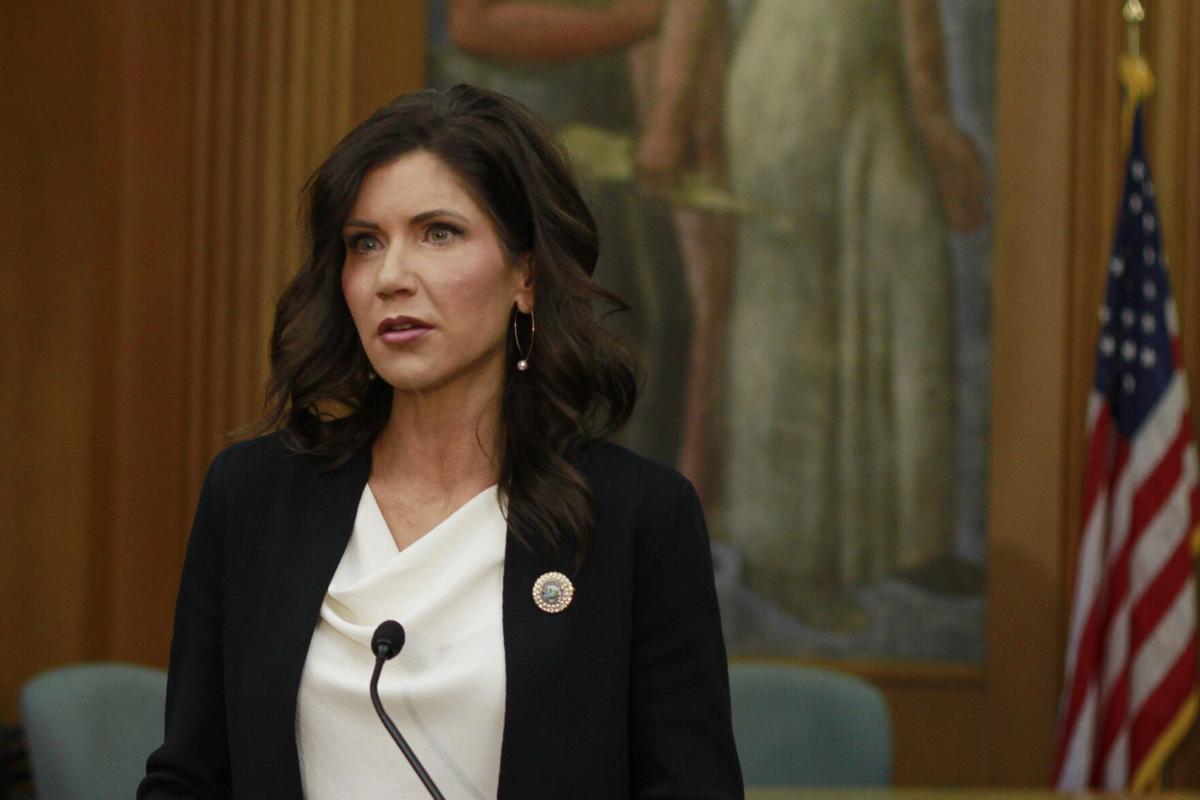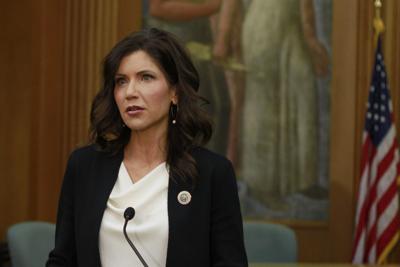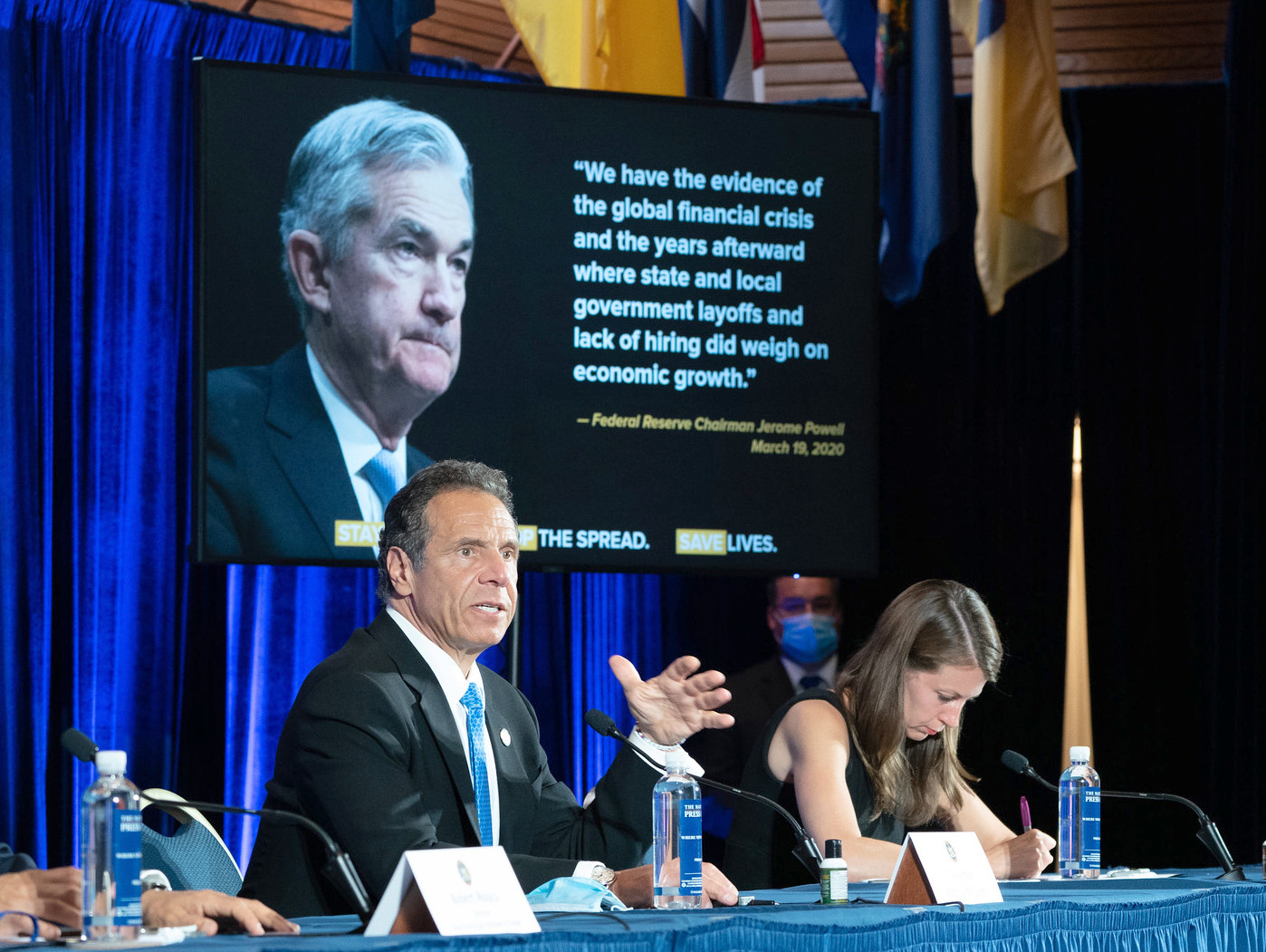South Dakota federal coronavirus funds go to law enforcement

FILE – In this June 22, 2020 file photo, South Dakota Gov. Kristi Noem speaks at the Sioux Falls city hall in Sioux Falls, S.D. As the state looks to use $1.25 billion in federal coronavirus relief funds, one of the largest expenditures has been for law enforcement. The funds came with the stipulation that they be used in addressing the pandemic and anything unused would be returned at the end of the year. Gov. Noem’s administration opted to use the money to pay salaries for law enforcement officers.
Stephen Groves
SIOUX FALLS, S.D. (AP) — As South Dakota looks to use $1.25 billion in federal coronavirus relief funds, one of the largest expenditures has been for law enforcement.
The money sent by Congress as part of a $2.2 trillion stimulus was a major windfall for South Dakota, a state that prides itself on low taxes and a minimal state budget. Its share is equivalent to roughly a quarter of the state budget. But the funds came with the stipulation that they be used in addressing the pandemic and anything unused would be returned at the end of the year. Gov. Kristi Noem’s administration opted to use the money to pay salaries for law enforcement officers.
That decision drew questions this week from legislators on a committee auditing the budget who wondered what portion of police officers’ salaries should be justified as addressing the pandemic.
The entire salary of police officers can be paid from those funds, according to Liza Clark, the commissioner of the Bureau of Finance and Management. The U.S Treasury’s guidance is that public safety and public health officials are substantially dedicated to addressing COVID-19, she told lawmakers.
The designation for law enforcement will make up a substantial amount of the money spent from the coronavirus relief fund. The state has spent about $75 million of the federal funds so far. Most of that — $45.6 million — has gone to paying unemployment benefits. But the Department of Public Safety has received more funding than any other state agency besides the Department of Health and the Board of Regents.
So far, the state has used $4.5 million to pay salaries and benefits in the Department of Public Safety, which mostly went to highway patrol officers. The state is also making $200 million available to city and county governments, and they can pay police officers’ salaries from the fund. Most of those grants have not been processed yet.
But the Legislature’s auditor Bob Christianson warned lawmakers that it is not clear what exactly can be claimed under the federal relief fund. He cautioned against “aggressive” claims and pointed out that the Treasury has advised that the money can only cover salaries for employees “substantially dedicated towards COVID.”
“It’s caused a lot of concern by the auditors on whether or not this is what was intended,” he said.
Clark countered that warning, saying that the state is so confident that police officers are covered under the federal funding that it is working with the Treasury to pay for salaries for court service officers, prison guards and parole officers.
While Congress stipulated that states cannot pay for expenses that were a part of a previously approved budget, Treasury guidance on using the funding appears to support the administration’s interpretation.
South Dakota’s approach helped the state end the fiscal year on June 30 with a $19 million surplus — an unexpected development amid the economic downturn from the pandemic. The state was able to cover previously-budgeted salaries with the federal money.
Susan Wismer, a Democrat from Britton, said she was confident in Clark’s judgment, but said it was clear that “COVID money is covering our government operations.”
She said the state should be using the money to do as much coronavirus testing as possible, pointing out that South Dakota’s rate of testing has lagged behind many neighboring states.
Speaker Steve Haugaard, a Sioux Falls Republican, said that paying for the police was a “stretch” of what Congress intended the money to be used for. He hoped lawmakers would come up with a way to help struggling businesses with the money, but said that anything unnecessary should be sent back to the federal government.
Copyright 2020 The Associated Press. All rights reserved. This material may not be published, broadcast, rewritten or redistributed without permission.










